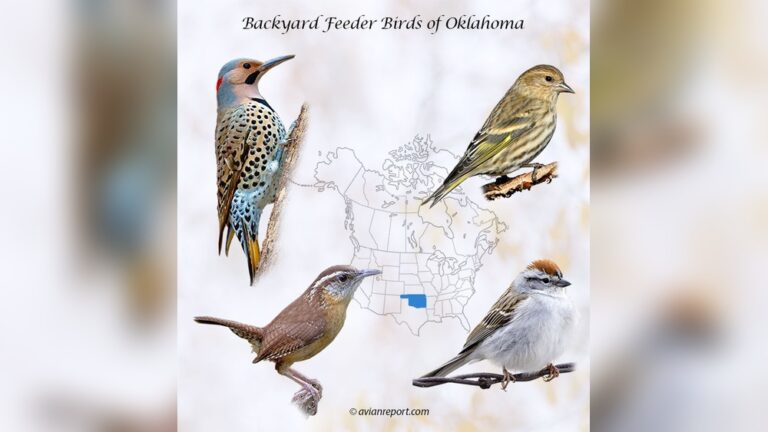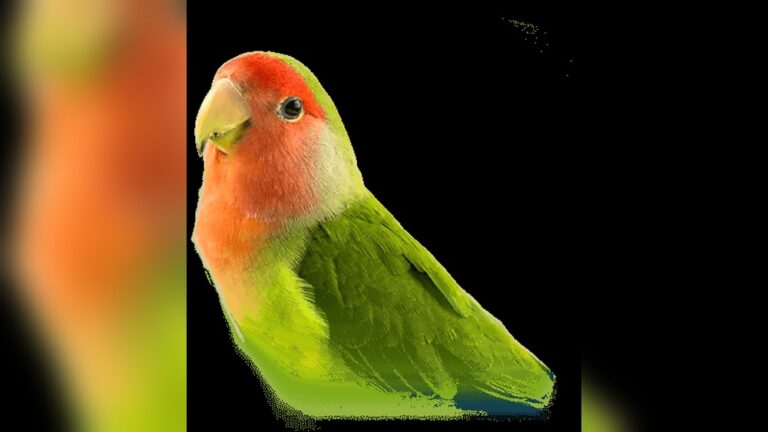Find City Bird Nests
Have you ever wondered where city birds build their homes right under your nose? Finding bird nests in urban spaces can be an exciting way to connect with nature, even amidst the concrete jungle.
Imagine spotting a tiny nest tucked away on a busy street or in a quiet park—it’s like discovering a hidden treasure. You’ll learn simple tips and tricks to find city bird nests safely and respectfully. Ready to see your city from a whole new perspective?
Let’s dive in and uncover these secret homes together.
Common City Birds
City birds are a common sight in urban areas. They live and nest close to humans. These birds have adapted well to city life. They find food, shelter, and safety among buildings and parks. Understanding common city birds helps in spotting their nests.
Species That Nest In Urban Areas
Several bird species choose cities for nesting. Pigeons are everywhere, often nesting on ledges and roofs. House sparrows build small nests in vents and eaves. Starlings use holes in buildings or trees. Robins pick shrubs and garden corners. Each species finds unique spots to raise young.
Behavioral Traits Of City Birds
City birds show special behaviors to survive. They are less afraid of people. They learn to find food in trash or bird feeders. Many sing loudly to defend territory amid city noise. They build nests quickly to avoid threats. These traits help them thrive in busy environments.

Credit: wildlife.utah.gov
Nest Locations In Cities
Birds adapt well to city life. They find many places to build nests. Nest locations in cities vary a lot. Some spots are common, while others are quite surprising. Understanding these locations helps us appreciate urban wildlife more.
City birds use buildings, trees, and unusual structures. These spots provide safety and shelter. Nesting success depends on finding the right place. Cities offer many choices for birds to raise their young.
Popular Nesting Spots
Trees remain the top choice for many birds. Parks and gardens provide quiet and food. Birds like sparrows and pigeons often nest on building ledges. Roof eaves and window sills are common sites. These spots offer protection from weather and predators.
Bridges and streetlights also host nests. Birds use gaps and crevices for safety. Urban green spaces support nesting with natural cover. These areas attract many bird species year-round.
Unusual Nesting Sites
Some birds surprise us with odd nesting spots. Vents and chimneys provide hidden spaces. Bicycle baskets and air conditioner units sometimes hold nests. Birds adapt to these strange places to avoid threats.
Others use abandoned nests from previous seasons. Even trash bins and mailboxes can become nest sites. This shows birds’ skill to use all city resources. Watching these sites reveals city birds’ cleverness.
Tools For Nest Finding
Finding bird nests can be an exciting and rewarding activity. Using the right tools helps you spot nests without disturbing the birds. Tools make it easier to observe nests from a distance and gather useful information.
Binoculars And Cameras
Binoculars help see nests high in trees or far away. They bring small details closer without getting too near. Cameras capture photos or videos of nests for later study. Zoom lenses are useful for close-up shots from a distance. These tools allow careful observation without scaring birds.
Mobile Apps And Online Resources
Mobile apps guide you to common bird nesting spots. Some apps show maps with recent nest sightings nearby. Online forums and websites share tips and photos from other bird watchers. Apps can help identify bird species by their calls or appearance. These digital tools support finding nests safely and learning more about birds.

Credit: www.popsci.com
Seasonal Nesting Patterns
Bird nesting changes with the seasons. These patterns help birds protect their young. Understanding these changes makes finding nests easier. Each season brings different nesting behaviors and locations. Observing these can lead to exciting discoveries.
Best Times To Spot Nests
Spring is the prime time for bird nests. Birds build nests to lay eggs and raise chicks. Early morning offers the best chances to see active nests. Birds are busy feeding and caring for their young. Late spring and early summer also show many nests.
Changes Throughout The Year
In summer, many nests are full of growing chicks. Parents are very active, bringing food often. By late summer, most chicks leave the nest. Fall and winter bring fewer nests. Birds rest or migrate to warmer areas during cold months.
Safety And Ethics
Finding city bird nests is exciting and rewarding. It connects us to nature in urban places. But safety and ethics must guide every step. Protecting birds and their homes is very important. Careful actions help keep birds safe and stress-free.
Respecting Wildlife
Birds need peace and quiet to thrive. Stay calm and move slowly near nests. Avoid touching eggs or baby birds. Keep a safe distance to prevent scaring them. Use binoculars to watch without getting too close. Always remember, nests belong to birds, not us.
Avoiding Disturbance
Do not make loud noises near nesting sites. Avoid visiting nests too often or for too long. This can cause birds to leave their nests. Never take nests or eggs as souvenirs. Stay on paths and do not damage plants around nests. Protecting the habitat is as important as the nest itself.
Documenting Nests
Documenting bird nests is a key part of birdwatching and nature study. It helps track bird species and their habits. Careful records support conservation efforts and deepen understanding of birds’ lives.
Good documentation involves clear photos and detailed notes. It shows nest location, structure, and any activity. This information creates a valuable record for future reference.
Photography Tips
Use a camera with a zoom lens to avoid disturbing birds. Take pictures from different angles to show nest shape and size. Capture close-ups of eggs or chicks without getting too close. Natural light works best for clear images. Avoid flash as it can scare birds. Take multiple shots to ensure good quality photos.
Recording Observations
Note the date and time of each visit. Write down the nest’s location using landmarks or GPS. Describe the nest materials and its position in the tree or bush. Record any bird behaviors, like feeding or guarding the nest. Keep observations brief but detailed. Use a notebook or a mobile app to save your notes. Consistent records help track changes over time.
Community Involvement
Community involvement plays a big role in finding bird nests in the city. People working together can protect birds and learn more about them. Joining local groups and citizen projects helps nature and builds friendships. Everyone’s effort counts in watching and caring for city birds.
Citizen Science Projects
Citizen science projects invite people to collect data on bird nests. Anyone can join and help researchers track bird populations. These projects often use simple apps or websites to record sightings. Your observations can help scientists understand bird habits and challenges. It is a great way to contribute to real science from your city park or backyard.
Local Birdwatching Groups
Local birdwatching groups bring bird lovers together. They organize walks and talks about city birds and their nests. Groups share tips on how to spot nests safely and respectfully. Joining these groups improves your bird knowledge and spotting skills. It also creates a community that cares for local wildlife.

Credit: rangerrick.org
How Smart Pets Lover Can Help You with Find City Bird Nests
Turning City Bird Nesting into a Learning Adventure
Exploring city bird nests offers more than a glimpse into urban wildlife—it’s a chance for practical learning that deepens our connection to nature right outside our windows. By observing nest locations in cities and understanding seasonal nesting patterns, you gain insights into birds’ survival strategies and behaviors in bustling environments. This hands-on experience encourages patience, attention to detail, and respect for wildlife, reinforcing the importance of safety and ethics when interacting with natural habitats.
- Keep a journal or photo log to document nests, linking observation with real-time learning.
- Share findings with local nature groups or online communities to foster a sense of community involvement.
- Use tools like binoculars and apps recommended by trusted sources to enhance your discovery while minimizing disturbance.
At Smart Pets Lover, we believe every chirp tells a story worth understanding. For curious pet parents eager to explore city birds safely, connecting with local wildlife organizations or birdwatching clubs can offer valuable guidance and support. Feel free to reach out to your community’s nature centers to learn more about responsible bird watching and nesting habits.
Frequently Asked Questions
How Can I Spot Bird Nests In The City?
Look for nests in trees, bushes, and building ledges. Watch for bird activity like frequent flying to one spot. Early morning is the best time to observe nests quietly.
What Types Of Birds Build Nests In Cities?
Common city nesters include pigeons, sparrows, swallows, and crows. These birds adapt well to urban environments and use available materials to build nests.
Are City Bird Nests Safe To Observe?
Yes, but keep a respectful distance to avoid disturbing birds. Do not touch or remove nests, as this can harm the birds and may be illegal.
When Is The Best Time To Find Bird Nests In Cities?
Spring and early summer are peak nesting seasons. During this time, birds actively build nests and care for their young.
Conclusion
Finding city bird nests can bring joy and wonder to your daily life. Birds adapt well to urban spaces, creating nests in surprising places. Observing nests helps you understand city wildlife better. It also encourages care and respect for nature around you.
Keep a safe distance and watch quietly to avoid disturbing the birds. Enjoy the simple beauty of city birds building their homes. Each nest tells a story of life and survival in the city. Start exploring, and you might discover a hidden world above the busy streets.






